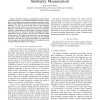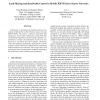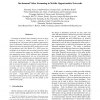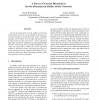PERCOM
2008
ACM
14 years 11 months ago
2008
ACM
Counting or estimating the number of tags is crucial for large-scale RFID systems. The use of multiple readers was recently proposed to improve the efficiency and effectiveness in ...
PERCOM
2008
ACM
14 years 11 months ago
2008
ACM
This paper presents preliminary results on anonymization and obfuscation techniques to preserve users' privacy in context-aware service provisioning. The techniques are based...
PERCOM
2008
ACM
14 years 11 months ago
2008
ACM
Pervasive computing systems provide personalized and intimate services to improve users' quality of life by integrating computation and communication into the environments. Wi...
PERCOM
2008
ACM
14 years 11 months ago
2008
ACM
Semantic similarity measurement gained attention over the last years as a non-standard inference service for various kinds of knowledge representations including description logics...
PERCOM
2008
ACM
14 years 11 months ago
2008
ACM
In this paper, we investigate the problem of resource constraints in Mobile Peer-to-Peer Wireless Sensor Networks (MP2P WSNs). We propose a scheme to load share tasks among peer s...
PERCOM
2008
ACM
14 years 11 months ago
2008
ACM
In this paper, we present a domain-specific Interface Definition Language (IDL) and its compiler, dedicated to the development of pervasive computing applications. Our IDL provide...
PERCOM
2008
ACM
14 years 11 months ago
2008
ACM
Providing on-demand video streaming services to large numbers of nodes in mobile wireless networks is a challenging task. We propose MOVi (Mobile Opportunistic Video-on-demand), a...
PERCOM
2008
ACM
14 years 11 months ago
2008
ACM
Comparing context of different entities is not easy at all. Since context depends on the situation of a particular entity it can be understood in different ways by various entitie...
PERCOM
2008
ACM
14 years 11 months ago
2008
ACM
Low cost devices such as RFIDs, sensor network nodes, and smartcards are crucial for building the next generation pervasive and ubiquitous networks. The inherent power and footpri...
PERCOM
2008
ACM
14 years 11 months ago
2008
ACM
Service placement deals with the problem of selecting which node in a network is most suitable for hosting a service that responds to queries from other nodes. Optimally placing s...




